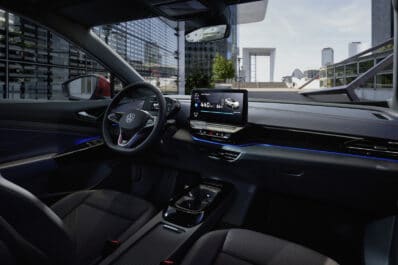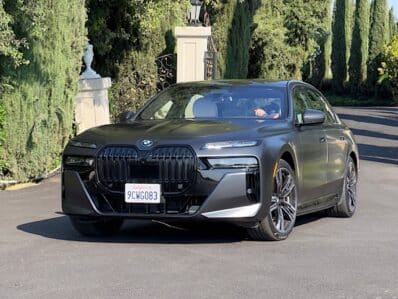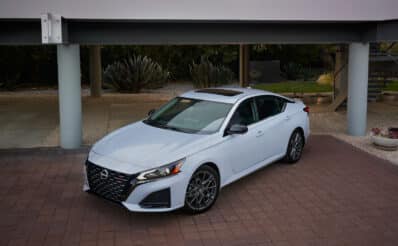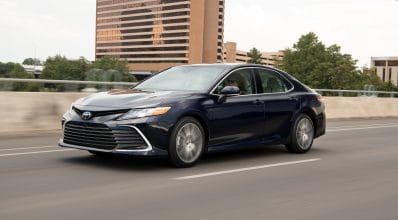When it comes to premium Japanese brands, Infiniti is the driving enthusiast’s choice. Lexus tends to be too soft, and Acura does very well at times, but Infiniti always delivers. The brand’s race-bred heritage through parent company Nissan gives it a natural and unforced capability for performance, tempered with enough luxury to make the whole package attractive.
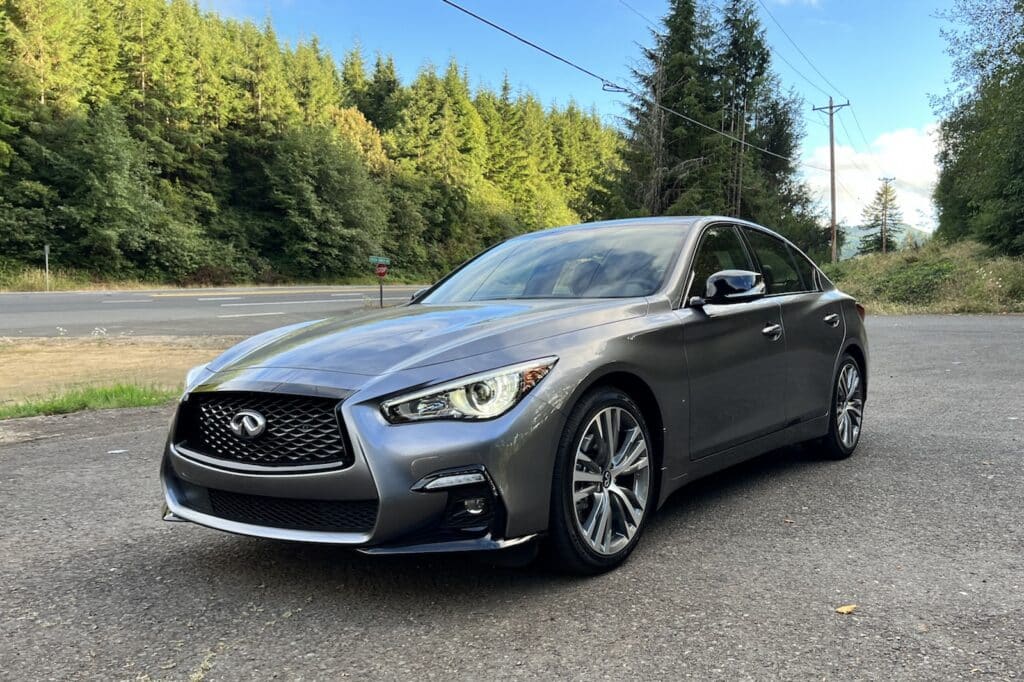
So it is with the Q50, which is Infiniti’s answer to the BMW 3 Series, Mercedes-Benz C-Class, Lexus IS and the Volvo S60. The Infiniti might not be equal to the M3 in performance, even if you buy the hot rod Red Sport 400 package, but it costs a lot less. If you’re looking at the run of the factory, however, the Infiniti is quite competitive.
Overview
The Infiniti Q50 is a compact four-door premium sport sedan, powered by a 3.0-liter twin-turbocharged V-6 engine good for a very conservative 300 horsepower and 295 pound-feet of torque. Power is passed to the rear wheels — or all four wheels — through an electronically controlled 7-speed automatic transmission with a manual option on the console shifter.
The Q50 is available in three trim levels corresponding to good, better, and fast. Our test vehicle was fitted out in the midgrade “Sensory” trim. The top trim mostly includes hot rod features like a more powerful engine, active suspension and bigger brakes. The base trim loses a few luxury features.
Exterior
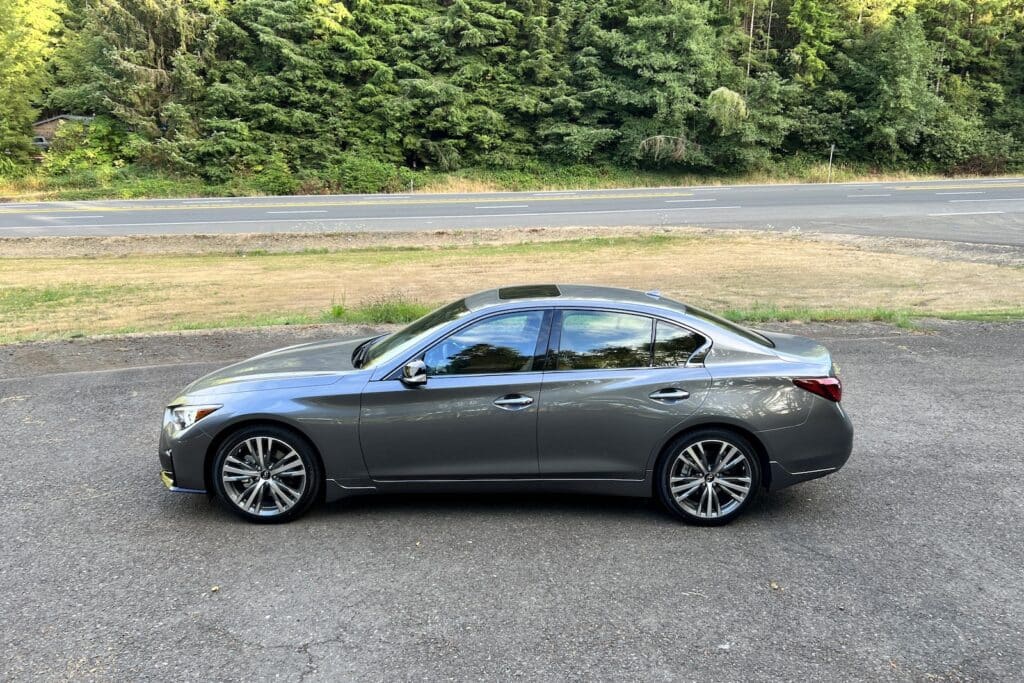
The Q50 is an attractive but really unremarkable exterior design. It’s a sedan that follows the same essential profile as all other premium sedans. The trunk area is short, the headlights look like intensely scowling eyes, and the fenders are ever-so-slightly flared. You’d have to see the grille badges to tell it apart from the Lexus IS at a glance.
One aspect to call out for particular praise is the Infiniti grille, which is tasteful and right-sized for the vehicle. That’s a boldly contrarian decision in the modern era, when garish and oversized grilles are the norm. Yeah, we’re looking at you, BMW and Lexus.
Interior
Here again, the Infiniti interior is perfectly nice without being standout in any particular way. All the touch surfaces are well-made of quality materials, and everything is laid out logically. The Infiniti is a textbook example of really good Japanese luxury design and engineering. There’s nothing here that’s weird for the sake of being weird.
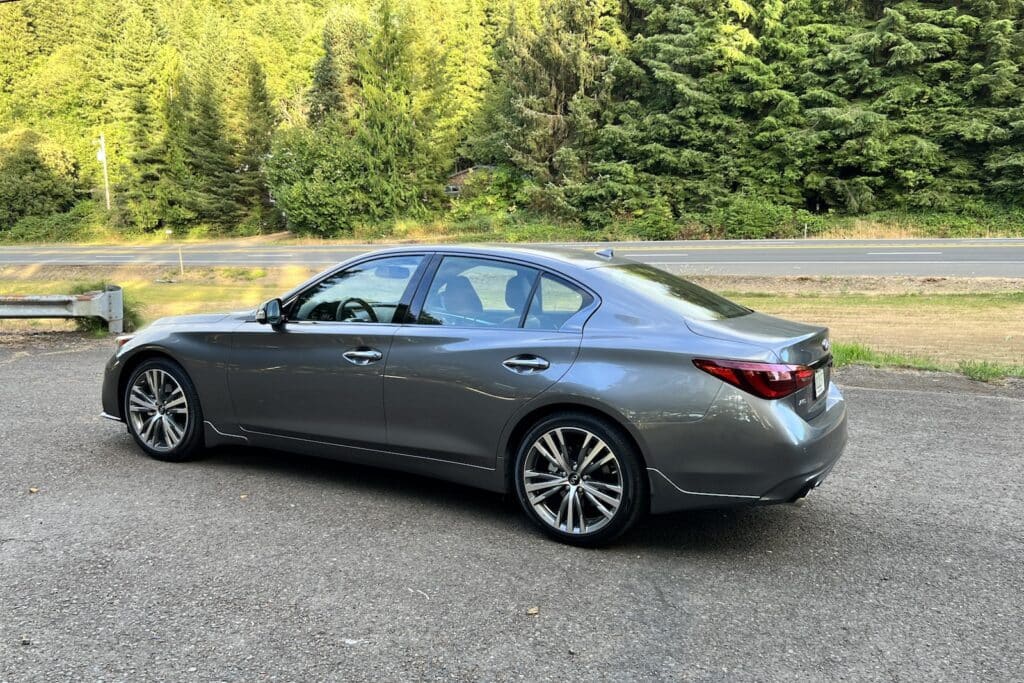
The one observation I always make about the Q50 is in relation to its two-door Q60 stablemate, and it’s that I find the doors a bit too small in the Q50. Getting in and out of the Q60 is easy, where I have to use a little more effort in the Q50. By comparison, getting into and out of a four-door C-Class is much easier.
Powertrain
I described the 300-hp output of the Q50 V-6 as conservative, and so it is. Many naturally aspirated V-6 engines put out 300 hp without a pair of turbos. It’s worth noting that the Red Sport 400 uses the same engine to make 100 more hp. Structurally, there’s no real difference between the two engines.
But if you think that’s a criticism, it’s not. The stated 300 hp is a well-balanced performance level for the Q50, and if it’s not stressing the V-6 at all to make that kind of power, then the engine’s more likely to last a long time, as opposed to some high-strung 2.0-liter 4-cylinder trying to wring out that much power.
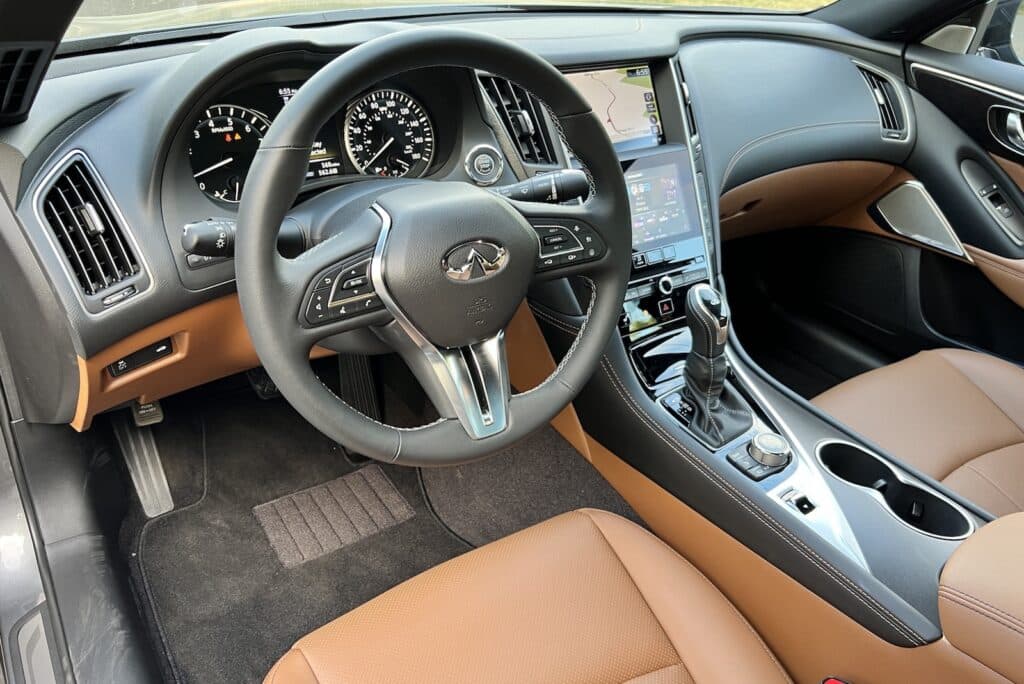
Safety and Technology
The National Highway Traffic Safety Administration has not completely rated the 2022 Q50, but the car does get five stars in rollover protection. The Insurance Institute for Highway Safety (IIHS) rates the Q50 with its highest “Good” rating in all crash tests. Only the LED headlights on the Q50 were less than stellar, according to IIHS.
As you can expect from any premium brand, the Infiniti Q50 has all the latest safety and driver assistance features, and it’s all standard. So no matter what trim you select, you’re getting blind spot monitoring and intervention, lane-departure control, and so on.
Dashboard tech includes Infiniti’s idiosyncratic dual display system, with your navigation map on top in an 8-inch screen, and then a 7-inch screen below it for infotainment and cabin controls. It’s unusual, but it works really well. The Infiniti system has all the usual refinements, including voice control and smart phone integration.
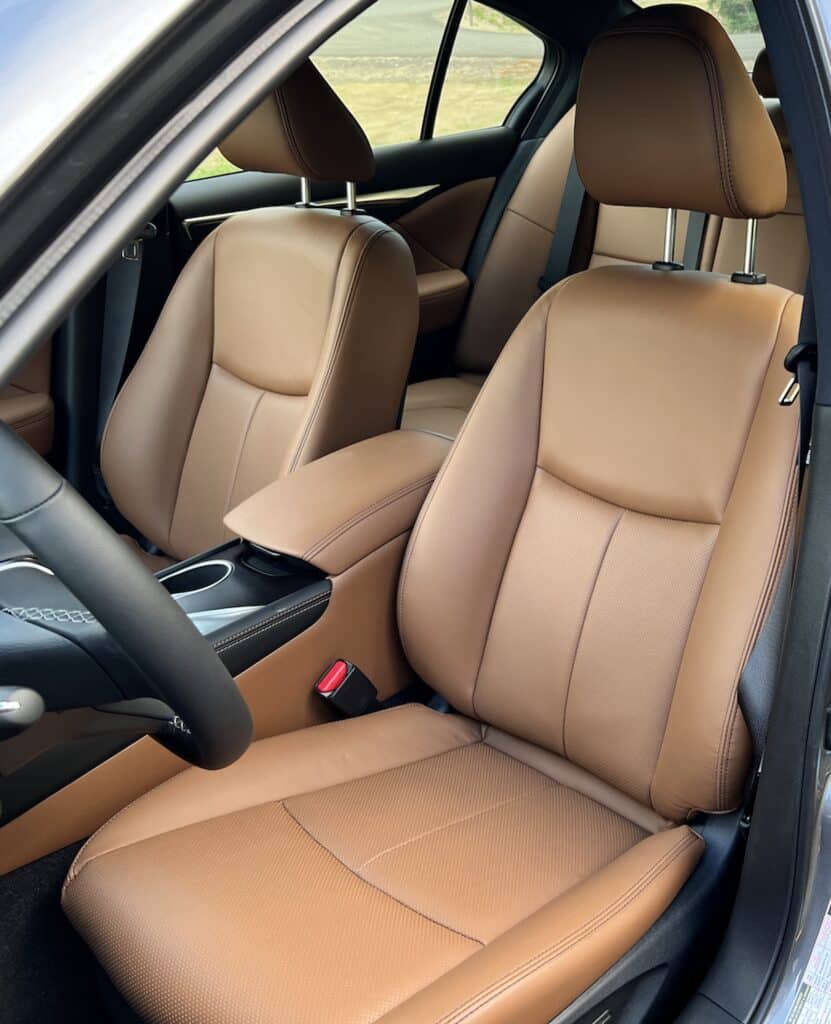
The real win in the Q50 tech story is the 16-Speaker Bose Performance Series Audio system with Bose Centerpoint simulated surround sound. It’s great. I was noodling along a favorite road on the Oregon coast, with redwoods to my left and the beautiful Netarts Bay to my right, when Heart’s “Magic Man” came on the satellite radio. While praying the signal didn’t drop out at the worst possible time, I cranked up the volume. That bit where the synthesizer does the smooth drop to extreme bass while the soprano Wilson sisters harmonize above it is a great test of any audio system, and the Infiniti passed with honors.
Driving Impressions
I described the Q50 as a textbook example of Japanese design and engineering, and that carries through to the driving experience. There are no quirks, no unexpected or non-linear behaviors, and nothing to warn you about.
The Q50 does everything well, within the bounds of a street-legal sport sedan. It’s fast, predictable, and the safety tech doesn’t screw with you as the driver. Try getting close to the fog line in some Mercedes products and the lane keeping will intervene with the force of a German schoolteacher smacking your hand with a ruler.
The Q50 is simply a pleasant, wonderful, balanced car to drive. That’s what you want in a premium sport sedan, not any weirdness that you “just have to get used to.” So, top marks in decorum for Infiniti.
2022 Infiniti Q50 Sensory AWD Specifications
| Dimension | L: 189.6 inches/W: 71.8 inches/H: 56.8 inches/Wheelbase: 112.2 inches |
| Weight | 3,855 pounds |
| Powertrain | 3.0-liter twin-turbocharged V-6; 7-speed automatic transmission AWD |
| Fuel Economy | 19 mpg city/27 mpg highway/22 mpg combined |
| Performance Specs | 300 horsepower and 295 pound-feet of torque |
| Price | Base price: $43,725; As tested: $51,425 including $1,075 destination charge. |
| On-Sale Date | Available now |
Wrap Up
Infiniti gives you three trim levels for the Q50. The base Luxe trim is very good, with leather, heated front seats and steering wheel, and you get the nice engine with rear-drive for $42,650 MSRP. Adding AWD is $2,000 extra in any trim level. Moving up to the Sensory trim, the price is $48,350, and that buys you the navigation system, 19-inch wheels, black wood trim and a few other things. The top Red Sport 400 trim starts at $56,500, and that gets you the extra 100 hp, active suspension, big brakes and a distinctive visual presence.
Honestly, if I was spending my own money, I’d get the Luxe AWD trim. With smart phone integration, you don’t need to pay for navigation except for a little bit of convenience. Infiniti specs out the basic Luxe trim so nicely it’s not like you’re going to rue your cheapness in winter because you didn’t get the heated seats.
However, if you want the real hot rod, the Red Sport 400 is there for you. And the Sensory trim is likely to be the volume seller, so I might discreetly walk down the Certified Pre-Owned aisle at the dealership and see what kind of deals they’re making on low-miles lease returns. Whatever trim you choose, the Infiniti Q50 is going to be a good choice and a good value.
2022 Infiniti Q50 Sensory AWD — Frequently Asked Questions
Is the Infiniti Q50 a reliable car?
Repairpal.com rates the Q50 as 4 out of 5, or 10th out of 31 contenders for luxury cars. Average annual repair cost is estimated at $648, which is about average.
Does the Infiniti Q50 need premium gas?
Yes, it does.
Is the Infiniti Q50 fast?
The Q50 Red Sport 400 trim does the 0-60 dash in 4.5 seconds. That’s pretty quick.



